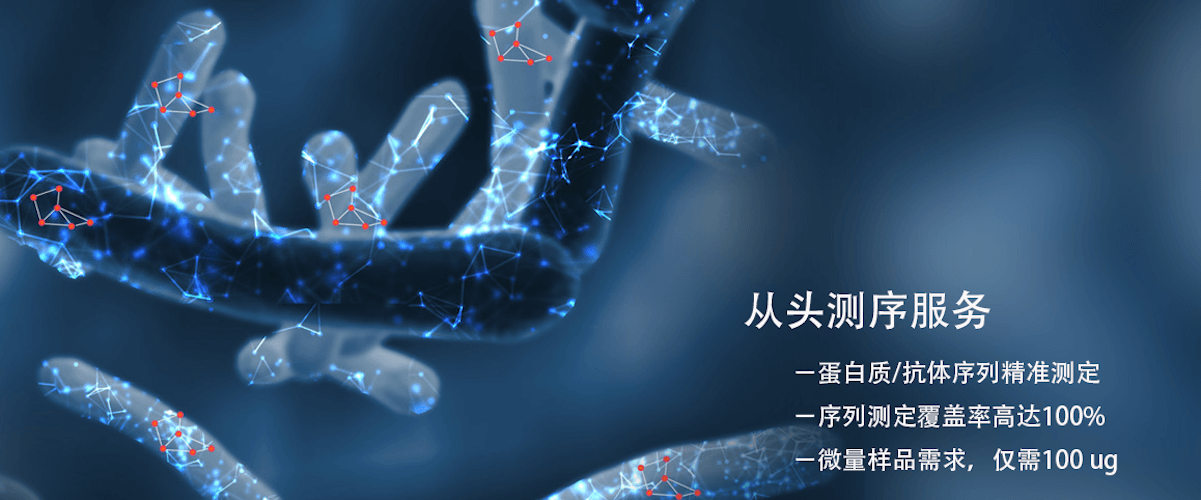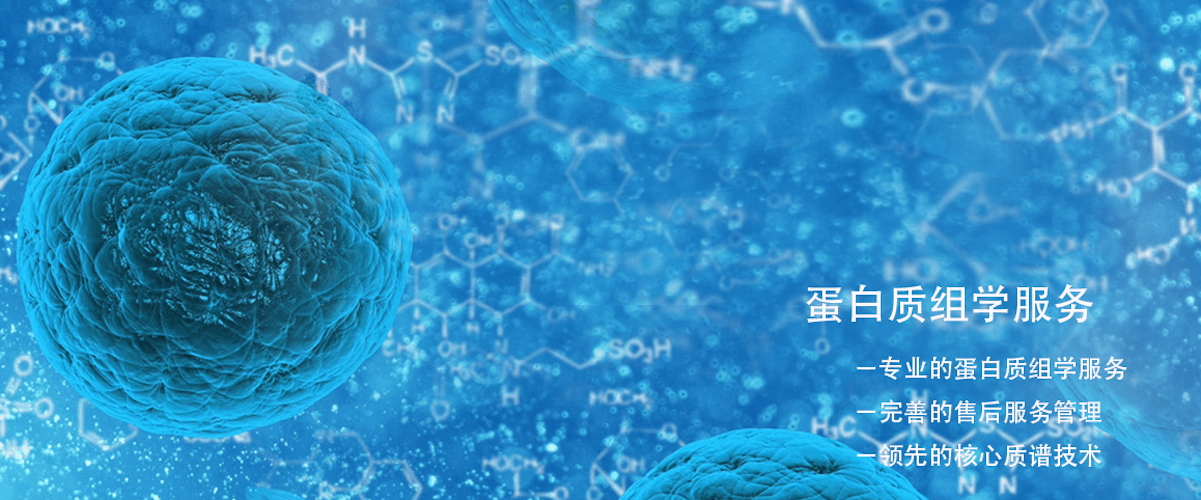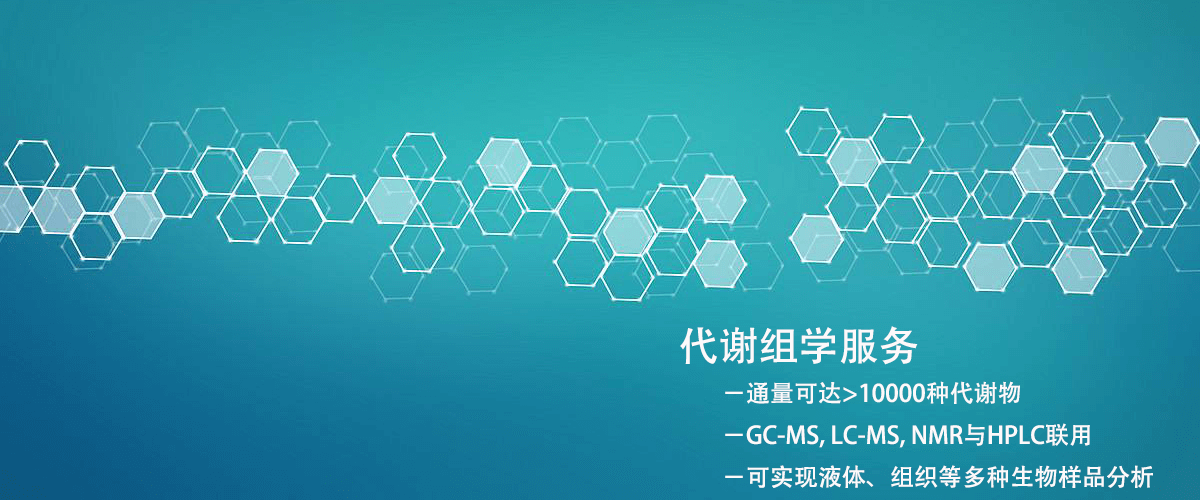Resource Center
• Advantages and Disadvantages of De Novo Peptide Sequencing
The main advantage of De Novo peptide sequencing is its ability to identify novel or modified peptides, which is significant in the study of new biomolecules, pathological research, and personalized medicine. The pros and cons of De Novo peptide sequencing mainly reflect a trade-off in terms of recognition capability and accuracy: it can discover unknown or unannotated proteins without relying on reference databases, but its precision is still limited in complex samples. Additionally, due to the complexity of mass spectrometry data and the diversity of peptides themselves, De Novo peptide sequencing may encounter issues with inaccurate sequence inference when processing complex and highly variable samples. Furthermore, the length of the peptides and the resolution of the mass spectrometer have a significant impact on sequencing accuracy. The advantages and disadvantages of De Novo peptide sequencing are also reflected in processing speed and computational resource consumption. Compared to database search methods, De Novo peptide sequencing has a higher computational complexity, often requiring more time and stronger computational power. However, with the development of algorithms and computer technology, these limitations are gradually being overcome, and the future application potential of De Novo peptide sequencing in high-throughput and complex data analysis is enormous. Common Questions: Q1. In what situations does De Novo peptide sequencing have the greatest advantages? A: De Novo peptide sequencing is most advantageous in scenarios that include analyzing novel or modified peptides that cannot be identified through traditional database searches, as well as species or sample analyses without a genomic reference. It provides significant insights in discovering unknown proteins and variants.
• De Novo Peptide Sequencing Workflow
The De Novo peptide sequencing workflow is typically achieved through a combination of mass spectrometry analysis and algorithmic interpretation, allowing for the precise identification and characterization of the amino acid sequences of peptides in biological samples. Mass spectrometry technology ionizes and fragments peptide molecules, generating characteristic fragment ions, whose mass-to-charge ratio (m/z) is accurately measured. Then, De Novo peptide sequencing utilizes this experimental data to infer possible amino acid sequences through algorithms. Thanks to the high sensitivity and resolution of mass spectrometry technology, it has become one of the key techniques in proteomics research. In the workflow of De Novo peptide sequencing, the sample first needs to undergo preprocessing and digestion, usually using proteases to break down proteins into sequencable peptide fragments. Next, these peptide fragments are analyzed by the mass spectrometer. The instrument generates mass spectra of the peptide fragments through tandem mass spectrometry (MS/MS), providing the foundational data for subsequent sequence inference. In the data analysis phase, De Novo peptide sequencing involves complex signal processing and computational analysis to identify fragment ions in the mass spectra and perform sequence inference. Advanced algorithms then rearrange and score possible amino acid sequences to ultimately determine the peptide sequence that best fits the experimental data. The De Novo peptide sequencing workflow is not limited to sequence interpretation but also includes verification and data integration. In the verification step, the inferred peptide sequences must be compared with experimental data to assess their accuracy and consistency. Furthermore, the De Novo peptide sequencing workflow may also involve integration with other mass spectrometry data to...
• Steps for Unknown Protein Sequencing via Protease Digestion
The steps for unknown protein sequencing via protease digestion first involve the use of specific proteases to recognize certain amino acid residues in the protein sequence and cleave the peptide chains at these positions. Through this selective cleavage, unknown proteins can be broken down into a series of smaller peptide fragments. Next, by analyzing these peptide fragments using mass spectrometry, researchers can obtain information on their mass and amino acid sequences. The strategy of protease digestion effectively reduces the complexity of proteins, thereby improving the accuracy and efficiency of sequencing. Choosing the appropriate protease is one of the key steps in unknown protein sequencing via protease digestion. Commonly used proteases include trypsin, chymotrypsin, and elastase. Each protease has different cleavage specificities, so selecting the right protease can be adjusted based on the properties of the target protein and experimental needs. To obtain more complete amino acid sequence information, various combinations of proteases are often used for digestion. Protease digestion not only enhances peptide coverage but also improves the reliability of sequencing results through cross-validation. In experiments involving unknown protein sequencing via protease digestion, mass spectrometry analysis is the core technology for obtaining peptide fragment sequence information. Using mass spectrometry instruments, researchers can accurately determine the molecular weights of peptide fragments, thereby indirectly inferring their amino acid sequences. This process is usually combined with liquid chromatography techniques to enhance detection sensitivity and separation capability. By utilizing protease digestion and high-resolution mass spectrometry analysis, it is possible to conduct in-depth analysis of complex protein samples, revealing their composition and functions...
• De Novo Protein Sequencing Workflow
The de novo protein sequencing workflow is of significant importance in basic research, drug development, biomarker identification, and disease diagnosis. De novo protein sequencing is primarily achieved through mass spectrometry combined with biochemical experiments, providing valuable information about unknown or newly discovered proteins. The de novo protein sequencing workflow typically includes steps such as sample preparation, protein digestion, peptide separation, and mass spectrometry analysis. High-resolution mass spectrometers greatly enhance the accuracy and efficiency of de novo protein sequencing. In the de novo protein sequencing workflow, sample preparation is a crucial initial step. Samples need to be purified and concentrated in a form suitable for mass spectrometry analysis. The subsequent protein digestion step typically uses enzymatic cleavage, such as trypsin, to cut proteins into smaller peptide segments for easier subsequent analysis. Peptide separation is achieved through methods such as liquid chromatography to improve the sensitivity and resolution of mass spectrometry detection. In the mass spectrometry analysis phase, the mass-to-charge ratio of the peptides is determined, and the generated mass spectrometry data is analyzed using computer algorithms to infer the amino acid sequence of the protein. Mass spectrometry data analysis is one of the most challenging aspects of the de novo protein sequencing workflow. It requires advanced algorithms to interpret the mass spectra to accurately reconstruct the amino acid sequence. Due to the complexity and noise in mass spectrometry data, efficiently and accurately extracting useful information is currently a research hotspot. Additionally, for specific protein or sample sequence features, specific chemical modifications or labeling treatments may be needed to improve sequencing results. Common Questions: Q1. In protein...
• Applications of De Novo Protein Sequencing
The application of de novo protein sequencing mainly involves deciphering the amino acid sequences of unknown proteins. Traditional protein sequencing methods usually rely on known genomic data, while de novo sequencing employs advanced technologies such as mass spectrometry to directly analyze protein sequences from actual samples. The application of de novo protein sequencing helps reveal complex protein interaction networks within biological systems. Particularly in the study of non-model organisms, the discovery of novel biomarkers, and the development of new drugs, de novo protein sequencing plays an irreplaceable role. In the biomedical field, de novo protein sequencing aids in the identification and characterization of novel protein biomarkers associated with diseases. By performing de novo sequencing on pathological tissue samples, researchers can find specific proteins related to disease progression, thereby providing important foundational data for personalized medicine. Furthermore, the application of de novo protein sequencing also holds significant potential for early diagnosis of diseases, as it can provide precise molecular information directly from the protein level without genomic background. In the agriculture and food industry, the application of de novo protein sequencing also demonstrates tremendous value. Conducting de novo sequencing on novel proteins in plants and animals can help enhance crop disease resistance and improve livestock production efficiency. Meanwhile, in the field of food safety, in-depth analysis of proteins in food using de novo sequencing technology can effectively identify potential allergens and ensure food safety. Frequently Asked Questions: Q1. How does de novo protein sequencing identify proteins without genomic data? ...
• Mass Spectrometry-Based De Novo Protein Sequencing Steps
Mass spectrometry-based de novo protein sequencing primarily utilizes mass spectrometry instruments to infer sequence information by determining the mass-to-charge ratio of proteins or peptides. The first step in mass spectrometry-based de novo protein sequencing is to digest the protein sample to be analyzed, typically using common enzymes such as trypsin to break down the protein into shorter peptide segments. Next, these peptides are analyzed by the mass spectrometer to generate a mass spectrum. By interpreting the peak information in the mass spectrum, the amino acid sequence of the peptides can be deduced. This process relies on complex software algorithms to address the complexities caused by modifications, variations, or sequence repeats, thereby enabling the de novo inference of the protein's amino acid sequence. Mass spectrometry-based de novo protein sequencing is not only an important aspect of proteomics research but also plays an indispensable role in biomarker discovery, drug target identification, and the study of novel protein functions. In practical operations, mass spectrometry-based de novo protein sequencing requires multiple steps of mass spectrometry analysis, including first-level mass spectrometry (MS1) and second-level mass spectrometry (MS/MS) analysis, to provide more detailed peptide fragment information. MS1 is used to measure the mass-to-charge ratio of intact peptides, while MS/MS provides more specific structural information through selective fragmentation. This multi-level analytical approach can accurately determine the mass-to-charge ratios and fragment patterns of peptides, thus improving the accuracy and reliability of de novo protein sequencing. Frequently Asked Questions: Q1. What challenges does mass spectrometry-based de novo protein sequencing encounter when dealing with complex samples? A: The large number of proteins in complex samples and significant differences in their concentrations may lead to...
• Unknown Protein Sequencing Principles
The core purpose of unknown protein sequencing is to identify the primary structure of protein molecules, thereby inferring their functions and roles in biological systems. The principles of unknown protein sequencing rely on advanced bioinformatics tools and high-resolution mass spectrometry analysis techniques. By fragmenting proteins and separating them via electrophoresis, sequence information can be obtained. In this process, researchers often use tandem mass spectrometry (MS/MS) technology, which allows for in-depth analysis of complex protein mixtures to identify the specific composition of unknown proteins. Additionally, mass spectrometry-based protein sequencing is a rapidly developing field that combines chemical analysis and bioinformatics to decode unknown proteins through efficient and precise means. By performing mass spectrometry analysis on protein samples, researchers can obtain a large amount of sequence data, enabling the identification of new proteins and the study of their biological functions. This is significant for understanding disease mechanisms, drug development, and synthetic biology. Particularly in the identification of disease-related protein biomarkers, unknown protein sequencing can help scientists discover new biological markers, promoting the development of early disease diagnosis and personalized medicine. The principles of unknown protein sequencing are often combined with other technologies, such as X-ray crystallography and cryo-electron microscopy, to provide more comprehensive protein structural information. Frequently Asked Questions: Q1. What technical challenges does unknown protein sequencing face in mass spectrometry analysis? A: The main challenges in mass spectrometry analysis include sample complexity, various post-translational modifications of proteins, and the detection of low-abundance proteins. Due to the complexity of protein samples...
• De Novo Peptide Sequencing Based on High-Resolution Mass Spectrometry
De Novo peptide sequencing based on high-resolution mass spectrometry utilizes the exceptional resolution capability of high-resolution mass spectrometers to accurately measure the mass of peptide fragments, thereby identifying and resolving the amino acid sequences. This technology is of significant importance in proteomics research, especially in the discovery and identification of novel proteins, addressing the limitations of traditional methods. Since it does not require reference protein or gene databases, De Novo peptide sequencing based on high-resolution mass spectrometry can detect those peptides or protein variants that have not yet been recorded in databases. The core of De Novo peptide sequencing based on high-resolution mass spectrometry lies in leveraging the high precision and sensitivity of high-resolution mass spectrometers to systematically analyze the fragmentation ions of peptides, thus directly inferring the amino acid sequences. Mass spectrometers typically employ tandem mass spectrometry (MS/MS) techniques, generating a series of fragment ions through collision-induced dissociation (CID) or other cleavage methods. De Novo peptide sequencing based on high-resolution mass spectrometry can reverse-engineer the amino acid composition of peptide chains based on the mass differences of these ions. The high accuracy of this technology relies on the combination of precise ion mass measurement and effective algorithms to eliminate errors and generate the most reliable sequences. When utilizing De Novo peptide sequencing based on high-resolution mass spectrometry, the use of high-resolution mass spectrometry enhances the accuracy of sequence inference, allowing for better resolution of complex peptide segments. Compared to traditional database search methods, De Novo peptide sequencing based on high-resolution mass spectrometry has significant advantages in analyzing unknown proteins or novel biomarkers. In addition, ...
• Principle of De Novo Protein Sequencing
The principle of de novo protein sequencing involves directly analyzing protein molecules rather than relying on known DNA or RNA sequence information to identify the amino acid sequence of unknown proteins. Typically, the principle of de novo protein sequencing relies on mass spectrometry (MS), particularly tandem mass spectrometry (MS/MS), as its core technology. In this process, proteins are usually enzymatically digested into smaller peptide fragments, which are then ionized and further fragmented in the mass spectrometer. By analyzing the mass-to-charge ratios of these fragment ions, the amino acid sequences of the peptides can be inferred, allowing for the reconstruction of the entire protein sequence. The principle of de novo protein sequencing has been extensively used in the discovery of new proteins, determination of antibody sequences, and development of biopharmaceuticals. The accuracy and effectiveness of this technology stem from its ability to analyze complex mass spectrometry data, relying on high-performance algorithms and computational tools to solve inverse problems and deduce the original protein sequence from the fragment spectra. The principle of de novo protein sequencing also provides new insights into understanding post-translational modifications, allosteric regulation, and protein-protein interactions. Given that the function of proteins is closely related to their sequences, mastering the principle of de novo protein sequencing holds significant implications for exploring biomolecular mechanisms and developing novel drugs. However, de novo protein sequencing also faces certain challenges, such as complex sample preparation and data analysis requirements. Frequently Asked Questions: Q1. How does the principle of de novo protein sequencing address complex post-translational modifications? A: De novo protein sequencing utilizes advanced mass spectrometry techniques to detect post-translational modifications...
• Advantages and Disadvantages of De Novo Protein Sequencing
A significant advantage of de novo protein sequencing is that it does not rely on protein databases or genomic information, making it particularly useful for newly discovered proteins or those that cannot be identified through genomic sequencing. This gives de novo protein sequencing a distinct advantage in studying novel microorganisms, exploring unknown functions of proteins in complex biological systems, and identifying specific disease biomarkers. However, de novo protein sequencing also faces some challenges and disadvantages. Its main drawbacks are complexity and cost. First, de novo protein sequencing typically requires a large number of experimental steps and complex data analysis processes, which have high demands for technology and equipment. Secondly, due to current technological limitations, the integrity and accuracy of sequences may be compromised, especially when dealing with large or complex proteins. These challenges can lead to reduced accuracy of results and extended analysis time, thus affecting research efficiency and costs. Scientists are actively developing more advanced technologies and algorithms to improve the precision and efficiency of de novo protein sequencing, thereby addressing the current disadvantages. The advantages and disadvantages of de novo protein sequencing manifest differently in various application scenarios, but with technological advancements, these advantages may be further amplified, while the disadvantages will be gradually overcome. Currently, researchers need to comprehensively assess the advantages and disadvantages of de novo protein sequencing to better apply it in scientific exploration and innovation. Frequently Asked Questions: Q1. Can de novo protein sequencing completely replace database-based protein identification methods? A: It is unlikely that de novo protein sequencing will completely replace database-based protein identification methods...
How to order?





